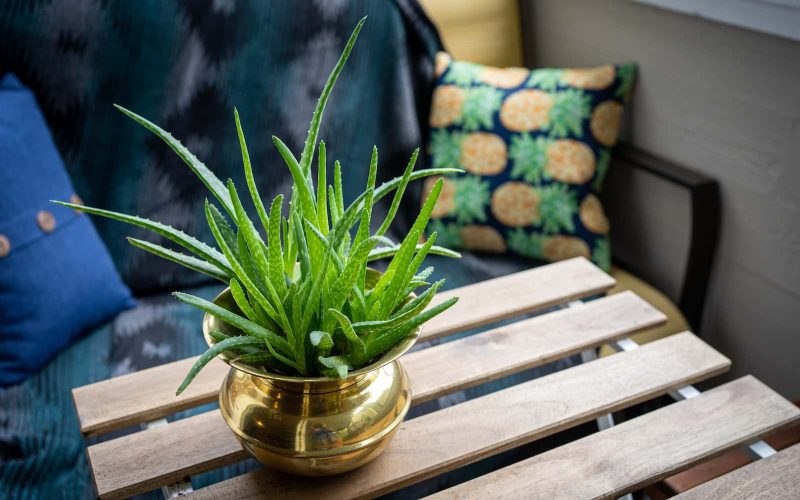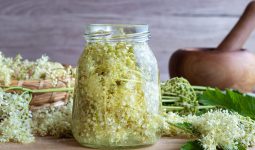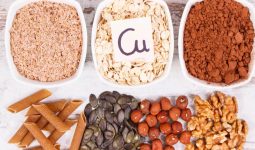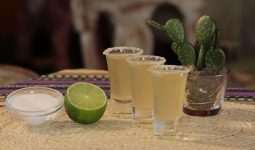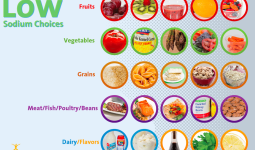Aloe vera is one of the oldest medicinal plant on the planet; its therapeutic usage dates back to ancient Egypt over six thousand years ago and till date it is still used in the treatment, cure and prevention of many disease.
In ancient Egypt aloe was regarded as a sacred plant and was used for healing, beauty and immortality.
They called it the “plant of immortality” and its anti-inflammatory and pain relieving effect were documented in the “papyrus Eber” of 1,550 BC (the famous Egyptian book of medicine). Aloe Vera is believed to have originated in North Africa, Sudan to be precise.
The earliest documentation about the therapeutic nature of Aloe vera was discovered on the clay boards from Nippur Mesopotamia and it dates back to 2,200 BC. The people in this era used it to clean the intestines, cure diseases and expel demons.
It is recorded in history that Alexander the great conquered the island of Socotra off the coast of Africa to secure enough Aloe vera to treat his wounded soldiers; famous Cloepatra, Photipher’s wife used aloes to treat her skin daily and no wonder she was and is still the icon of beauty.
In 1944, the Japanese who had injuries due to bomb explosion and used aloe vera to treat it reported faster healing and less formation of scar.
Ancient Chines medicine, Japanese medicine, Ayurveda and many traditional healing systems and famous people used aloe vera in one way or the other and benefited immensely from its therapeutic properties.
The Chinese call this plant the “method of harmony”; the Japanese call it the “royal plant”, the 16th century Jesuit monks spread the plant in areas where it was not known and educated people on the benefits and uses, the Mayas call it “the fountain of youth”, father kneipp, the father of modern day hydrotherapy believed in and used this plant in conjunction with his water treatment to treat and cure diseases.
Ancient healers held this plant in high esteem and considered it a blessing to humanity; there are over 300 species of Aloes and only four of them have therapeutic benefits and Aloe Barbadensis miller is at the top of the list for its immense healing properties.
In this article we will be looking at the health benefits of this wonderful plant and how to have one at your backyard or in a pot.
What are the active ingredients of Aloe vera?
Research has shown that this plant has over 70 active compounds; 75 to be precise and these active compounds are behind its healing powers.
- Vitamins: Aloes are rich sources of vitamin A, C, B12 and E; it also contains folate, choline and other powerful antioxidant that neutralize the functions and effects of free radicals.
- Enzymes: Aloes are rich in 8 powerful enzymes namely aliiase, alkaline phosphatase, amylase, bradykinase, carboxypeptidase, catalase, cellulase, lipase, and peroxidase. These enzymes help in the breakdown of sugars and fats while Bradykinase helps to reduce excessive inflammation when the fresh gel of Aloe vera is applied to the skin topically.
- Hormones: Aloes have two prominent hormones Auxins and gibberellins that help in wound healing and have anti-inflammatory action.
- Fatty acids: This plant has 4 plant steroids namely cholesterol, campesterol, β-sisosterol and lupeol. All these fatty acids have anti-inflammatory action with lupeol possessing antiseptic and analgesic properties.
- Minerals: Aloes are dense in minerals; some of the minerals include calcium, chromium, copper, selenium, magnesium, manganese, potassium, sodium and zinc which are essential for the proper functioning of various enzyme systems in different metabolic pathways and few are antioxidants.
- Sugars: Aloes are rich in monosaccharides and polysaccharides; The most prominent monosaccharide is mannose-6-phosphate, and the most common polysaccharides are called glucomannans [beta-(1,4)-acetylated mannan. Recently, a glycoprotein with antiallergic properties, called alprogen and novel anti-inflammatory compound, C-glucosyl chromone, has been isolated from Aloe vera gel.
- Anthraquinones: This plant contains 12 anthraquinones which are also known as laxatives; Aloin and emodin have analgesics, antibacterial and antiviral properties.
- Others: Other therapeutic active compounds found in aloes are salicylic acids which have anti-inflammatory and antibacterial properties; saponins that have cleansing and antiseptic properties, lignin which is an inert substance that helps other compounds to penetrate deeply into the skin and they contain 7 out of the 8 essential amino acids and 20 out of the 22 amino acids required by the body.
What are the amazing health benefits of Aloe vera?
It supports a healthy skin: This plant has been used since ancient times and it is still being used for the treatment of many skin infections and problems like psoriasis, dermatitis, oral mucositis, burns and surgical wounds. It is used in many beauty and cosmetic product due to its immense support for a healthy looking and glowing skin.
It also protect against skin damage caused by radiation and bad rays; its active ingredients and powerful antioxidants induce the production of metallothionein in the skin which fights and halts the activities of free radicals which can lead to rapid aging. It heals cold sores, soothes burns and fades wound scars.
Mucopolysaccharides present in Aloe vera helps in binding moisture into the skin and in this way aloe vera is a good skin moisturizer. Aloe help to stimulate the fibroblast which helps in the production of collagen and elastin fibers which make the skin more elastic and less wrinkled. It also has cohesive effects on the superficial flaking epidermal cells by sticking them together to soften the skin.
The amino acids present in this rich plant also soften hardened skin cells and zinc acts as an astringent to tighten pores thereby decreasing the signs of aging; aloe vera gel gloves improves the integrity of the skin, decreases the appearance of fine lines and wrinkles and decreases erythema.
It also prevents and fights acne and other skin problems. It also helps in curing and preventing skin rash, eczema, acne, psoriasis and quickly heals skin abrasion.
It heals wounds: For thousands of years, this plant has been used to naturally heal all kinds of wounds; Alexander the great was said to have conquered the island of Socotra off the coast of Africa just to get enough Aloe vera to treat his wounded soldiers.
The gel is used externally to dress wounds and it works like magic; the juice instantly seals the wound and increases the flow of blood to the area, this will enhance speeding healing of wounds and prevent infection of wound at the same time.
It also treats third degree burn victims and restores the skin to its original form faster; large amount of aloe vera gel can also heal tissue injuries and gunshot wounds.
It has 6 powerful antiseptic compounds that prevent infection of wound because they can inhibit fungi, bacteria and viruses. The six antiseptic compounds are Lupeol, salicylic acid, urea nitrogen, cinnamonic acid, phenols and sulfur.
Aloe vera gel contains Glucomannan which is a mannose rich polysaccharide and gibberellin which is a growth hormone; when the gel is applied topically on the site of injury, these compounds interacts with growth factor receptors on the fibroblast, thereby stimulating its activity and proliferation and this will in turn significantly increases the synthesis of collagen.
It boost healthy hair growth: It contains nourishing properties, tons of vitamins, minerals and phytochemicals that prevent hair loss, hair breakage, makes the hair strong and healthy, prevents dandruff and itchy scalp due to its antifungal and antibacterial properties.
The gel removes dead cells from the scalp and enhances the regeneration of skin tissues around the follicles of the hair and promotes the natural growth of hair. It improves circulation of blood to the scalp; its anti-inflammatory properties treats baldness and hair loss and it also retain a healthy and voluminous hair when the gel is applied on the scalp regularly, the gel contains enzymes that stimulate hair growth.
It reduces arthritis pain: Its wonderful anti-inflammatory properties help to instantly reduce the pain and swelling that comes with arthritis; its juice and topical application of the gel on the affected area calm the swelling and inflammation associated with arthritis. This anti-inflammatory property also makes it potent in relieving muscle and joint pains either by drinking the juice or by topical application of the gel.
It treats menstrual problems: It stimulates the uterus and reduces the pain and inflammation experienced during menstruation.
It promotes healthy digestion of food: Due to its rich content of laxatives and anti-inflammatory compounds, Aloes help with proper digestion of food and prevent digestive problems. Aloe vera juice normalizes the acid/alkaline pH balance of the stomach, it reduces the formation of yeast and encourages the growth of probiotics or digestive bacteria and it promotes regular and easy bowel movement.
It treats Irritable Bowel Syndrome (IBS), gastrointestinal problems, piles, crohn’s disease and stomach ulcers. Aloes are rich in antibacterial agents and natural healing phytochemicals that are able to restore the lining of the stomach to its normal health.
They also treat and prevent constipation due to their rich content of anthraquinones; these compounds increase the water content in the intestine, stimulate the secretion of mucous, increase intestinal peristalsis which helps in the proper break down and mixing of food.
It reduces the levels of cholesterol and triacylglycerides: When taken orally, it effectively lowers cholesterol and triacylglycerides, it improve the quality of blood, balance the amount of hormones, cholesterol and glucose. Combine blueberries with aloes to make it very effective in reducing cholesterol because blueberries also have powerful cholesterol reducing compounds.
It boosts the immune system: The enzymes found I this healing plant breaks down proteins and convert them into amino acids and fuel for every cell in the body and this helps the cells of the body to function properly thereby boosting immune functions; Bradykinase present in aloes kills infections and stimulates the immune system, zinc also is present in aloe vera and it supports a healthy immune system because a deficiency in zinc leads to a weakened or suppressed immune system.
It also helps to reduce the risk of autoimmune diseases; Alprogen inhibit calcium influx into mast cells, thereby inhibiting the antigen-antibody-mediated release of histamine and leukotriene from mast cells. It also has anti-tumor properties due to its rich content of polysaccharides.
It improves the functions of the heart: It preserves the blood vessels, it purifies blood and increases the flow of blood to all parts of the body and it keeps the blood fresh and rich in oxygen.
It is a rich source of antioxidants and it reduces inflammation: Antioxidants stop the activities and functions of free radicals which can cause brain damage and rapid aging; inflammation is at the root cause of most diseases so taking aloes regularly will keep one healthy, young and disease free. Aloe vera fights inflammation by inhibiting the cyclooxygenase pathway and reduce the production of prostaglandin E2 from arachidonic acid.
Recently, the novel anti-inflammatory compound called C-glucosyl chromone was isolated from gel extracts. Its antioxidant properties protects us from harmful UV rays, cigarette smoke, they also protect the skin from cancer and inflammation when exposed to harmful rays, chemicals and poisons.
To increase the anti-inflammatory nature of this plant; it is best to avoid inflammatory foods like refined white flour, milk, sugar, fried foods, meat and other forms of processed foods when taking the gel or juice.
It fights cancer: This plant is so smart that unlike chemotherapy and other dangerous forms of cancer treatment, it can distinguish between cancerous cells and non-cancerous cells; it attacks and kills only cancerous cells and tumors effectively.
This powerful cancer fighting property is due to its rich content of polysaccharides which contain some effective macrophages that produce huge volumes of nitric oxide, which has antitumor potential and anthraquinones also present in aloes inactivates various enveloped viruses such as herpes simplex, varicella zoster and influenza.
To make aloe vera more effective in the fight against advanced cases of cancer; it has to be combined with other anticancer herbs and foods like cat’s claw, spirulina, ginger, turmeric and intravenous vitamin C can be used alongside aloe vera.
This plant also heals the side effects of chemotherapy and other dangerous forms of cancer treatment; when the gel is applied topically to the site of radiation, it will immediately ease all discomfort and accelerate healing and drinking aloe juice will help to heal radiation burns.
It cures gum disease and prevents tooth decay: It soothes the gum, boosts healthy gums, reduce the buildup of plaques o the teeth and cures any infection or bruises; it does this by killing the plaque-producing bacterium Streptococcus mutans in the mouth, as well as the yeast Candida albicans, you can gargle with aloe vera liquid or you put the fresh gel on your toothbrush when cleaning your teeth. It also helps in the treatment of mouth ulcers and canker sores and also reduces the pain.
It regulates blood sugar: Aloes are good at preventing diabetes by regulating the amount of sugar in the bloodstream; it reduces high amount of sugar in the blood and also high amount of lipids.
It preserves food: Dipping fruits and vegetables in aloe vera gel and refrigerating them can preserve their freshness and taste for as long 40 days; it also eliminates E.coli and extends the shelf-life of fruits and vegetables. It is also used as a natural food flavouring agent.
How to use aloe vera?
The fresh gels are used in most cases but the juices can be bought from a health store; but if you have the plant at home you can use the fresh gel and to take it orally you can add it to smoothies.
The juice is made by crushing or grinding the entire leaf, then it goes through many processes to purify and filter the liquid; the flavour is mild and tolerable and it can easily be added to smoothies and fruit shakes. The juice can also be applied topically as it is known to treat sunburns.
How to plant?
It is very easy to own an aloe vera plant because they are easy to propagate and they also do best in dry conditions; you can also plant them in a pot or bowl but make sure it has plenty of drainage holes because this plant can’t stand plenty or standing water.
Make sure the pot or where the plant is have enough sunlight and the soil used should not be the type that retains water and the plant should be completely dried before being watered. Too much watering kills aloe vera plant.
Aloes don’t need fertilizers but you can add it if you chose and that should be once a year. When you are ready and have set everything in place for your plant; then you can the pups or offsets of aloe vera, this is done by dividing or separating newly formed aloe vera from the parent plant.
These pups are then planted and in time they become big and begin to multiply. Don’t water it immediately until after two weeks when the roots have become active and started growing.
Note that pregnant, menstruating and breastfeeding women should not take aloe vera orally; you should also consult a doctor before taking aloe vera if you are on medication because in some cases it can react with drugs and cause adverse side effects.
There are also some medical conditions that do not support the intake of aloe vera because it worsens the symptoms; in cases of liver problems, gall bladder problems and hemorrhoids, aloe vera should not be taken. It should also be taken in little quantity because though a plant, aloe vera is a potent medicine.




